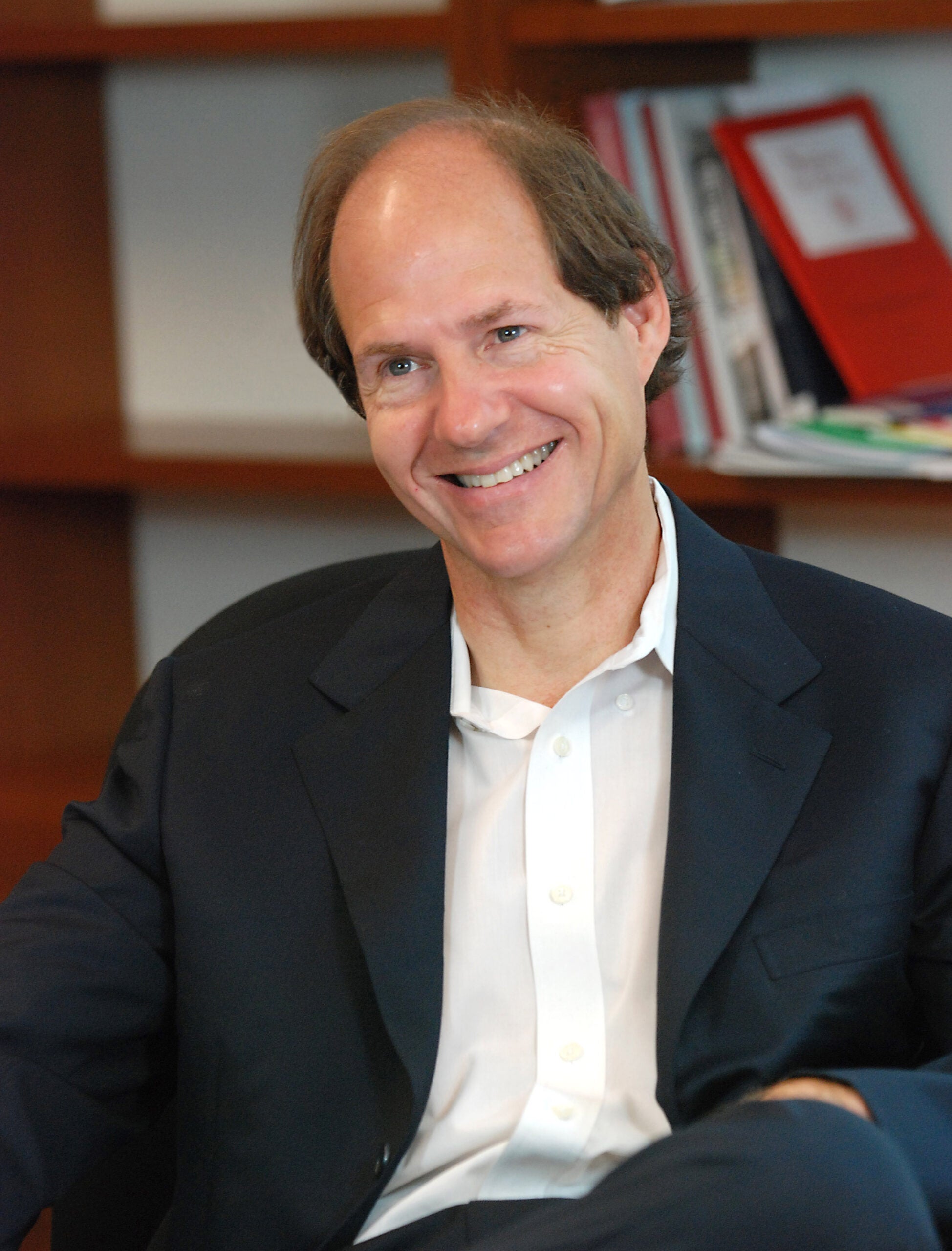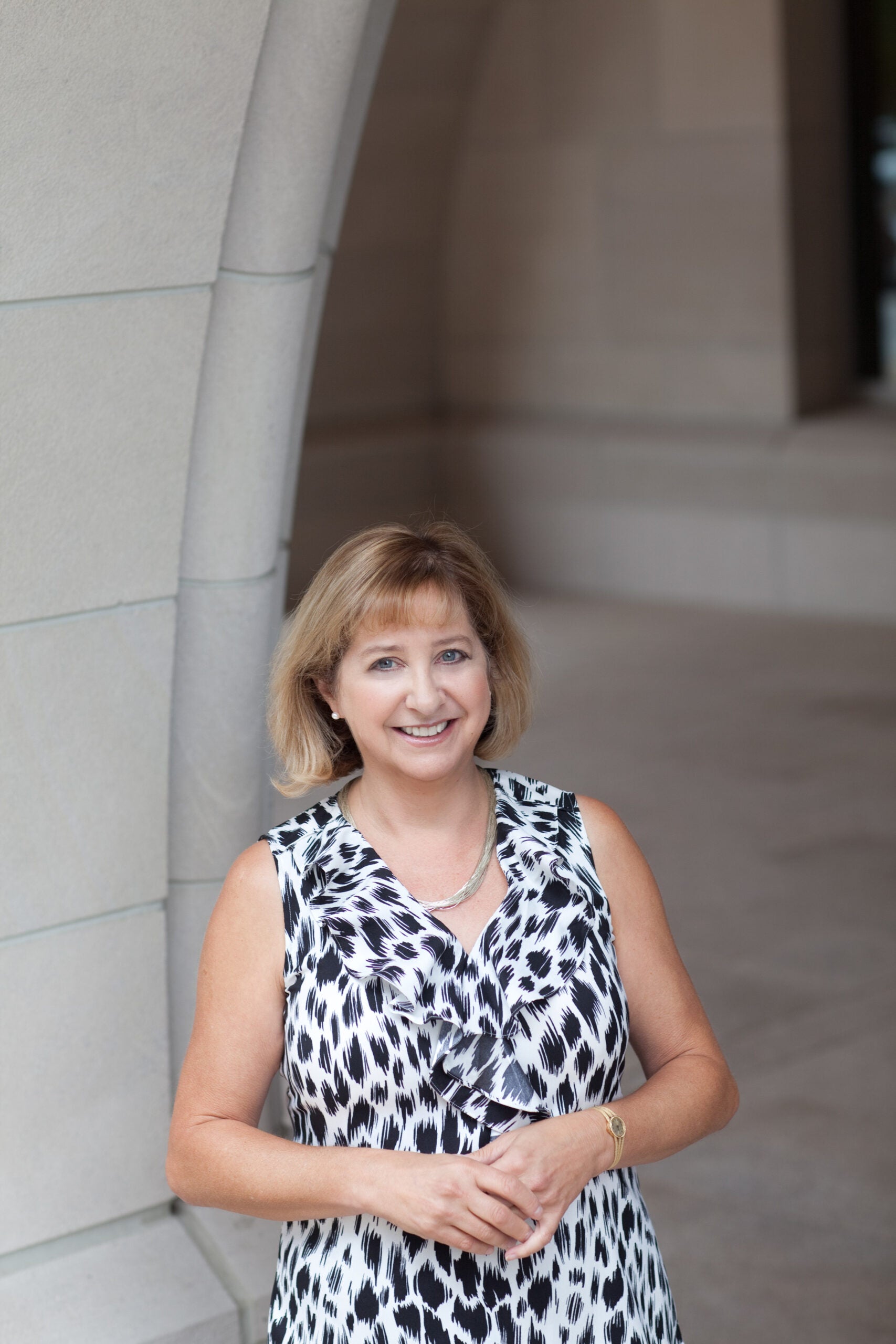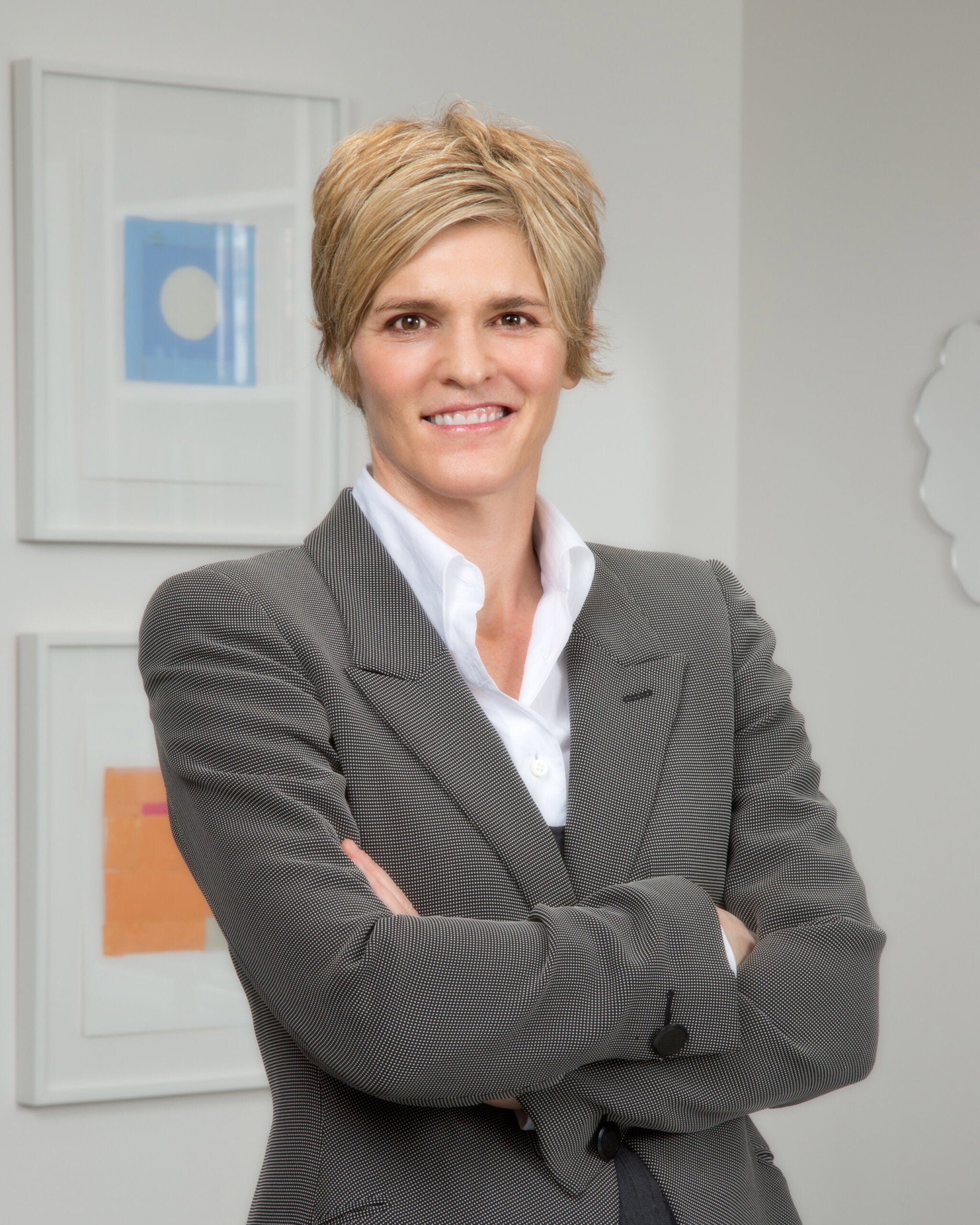Since it was founded in 2006 by Professor Jody Freeman, LL.M. ’91, SJD ’95, Harvard Law School’s Environmental Law and Policy Program (ELP) has become the leader in its field, with world-renowned faculty, innovative courses, an unparalleled clinical program that gives students hands-on training in real cases, and the new ELP Policy Initiative, which provides nonpartisan legal analysis and policy advice to federal and state agencies. In the spirit of Harvard University President Drew Faust’s recent focus on addressing the problem of climate change, we interviewed Professor Freeman, who served in the Obama administration as Counselor for Energy and Climate Change and is the co-author of a forthcoming book on global climate change and U.S. law. In the Q&A below, she discusses the range of ways in which HLS scholars and students are engaged in confronting the climate change problem.
Your course on Energy and Climate Law and Policy is widely viewed as innovative. Why?
Climate change is usually taught separately from energy law, when, in fact, they have everything to do with each other. My class is a unique, interdisciplinary course covering the full gamut of topics—electricity sector regulation, natural gas, nuclear power, and renewable energy, oil and gas regulation offshore and onshore, transportation sector policies, energy security, and hot topics such as the North American boom in unconventionals, the Keystone XL pipeline, and geo-engineering. We’ve had some terrific guests, including the Assistant Secretary of Defense for Operational Energy, the Assistant Secretary of Energy for Policy and International Affairs, and the Minority Staff Director to the House Energy and Commerce Committee, among others, who really make these issues come alive. The class poses the question, is it possible to have a coherent energy policy and climate policy at the same time? Students from all over campus and MIT join our HLS students, making for a wonderful mix of perspectives.
HLS Professor Richard J. Lazarus ’79, a leading authority on the Supreme Court and environmental law, who served as Executive Director of President Obama’s Commission investigating the BP oil spill, plays a leading role in the ELP. His course on advanced environmental law, which covers climate change, among other topics, is hugely popular. Why?

Well first, he is a phenomenally talented teacher. In addition, as someone who has argued 13 cases in the Supreme Court and provided counsel in dozens more, he offers a unique inside perspective to our students. As part of his course this spring, two-dozen students studied a climate change case pending before the Court, which involves a challenge to EPA’s greenhouse gas regulations. They spent weeks analyzing the case record and briefs, then attended the oral arguments, and afterwards, met with Chief Justice John Roberts ’79 and Solicitor General Donald B. Verrilli, Jr. This kind of deep dive into leading climate litigation, coupled with exposure to the key players, is really special and gives students a much better understanding of the complex issues.
How else is Professor Lazarus involved in the issue of climate change?
Richard serves on the board of the Environmental Defense Fund, where he also chairs its Litigation Review Committee, which oversees all proposals for engaging in litigation, including on climate change. So he plays a key role by advising stakeholders involved in the climate debate on which challenges make the most strategic legal and political sense. Closer to home, he also served on President Faust’s Greenhouse Gas Review Task Force this year, which undertook a comprehensive review of the University’s existing programs for reducing greenhouse gas emissions. In addition, he speaks and publishes widely on climate change, including a major article in the Cornell Law Review on how climate change is a “super wicked” problem because of its remote impacts, which calls for creative legal strategies. In January, he delivered a keynote address at a high-level conference of industry and government attorneys sponsored by the Edison Electric Institute and the Environmental Law Institute on pending Supreme Court climate change litigation. And he recently published an article in the Harvard Law Review Forum on the ability of the President of the United States to address the adverse risks of climate change through executive action both to reduce greenhouse gas emissions and adapt to climate change.

Harvard Law students also have the benefit of (Robert Walmsley University Professor) Cass Sunstein’s presence at HLS. Can you speak to his contribution?
Cass is a formidable scholar and public intellectual, and students not just at HLS but from all over campus are very keen to work with him. Cass has done important work on climate change, which has long been a significant part of his broader interest in regulation and behavioral law and economics. When he served in the Obama administration as Director of the White House office of Information and regulatory affairs, Cass oversaw the cost-benefit process for many major energy efficiency rules that have a huge impact on reducing GHG emissions. He also spearheaded the inter-agency process that for the first time established a government-wide social cost of carbon, which will be factored into the cost-benefit analysis for proposed regulations. That was a significant feat.
What are some of the more innovative projects on climate change that students are working on now?

The practical, hands-on work our students get to do on issues related to climate change is really unparalleled. Led by Wendy B. Jacobs ’81 (Clinical Professor of Law and Director of the ELP’s Emmett Environmental Law and Policy Clinic), and supported by our two terrific staff attorneys, Clinical Instructor Shaun Goho and Aladdine Joroff, our clinical students have for several years advised the city of Boston about options for preparing to manage the impacts of climate change, and last year, drafted regulations to implement one of the city’s climate change mitigation measures, the Building Energy Reporting and Disclosure Ordinance. In 2012, the Clinic advised a major national environmental group on reducing methane emissions from a natural gas fracking operation in the Bakken shale in North Dakota. This year, the Clinic filed an amicus brief in the same U.S. Supreme Court climate change case that Richard Lazarus and his students attended for oral argument, Utility Air Regulatory Group v. U.S. Environmental Protection Agency, which involved challenges to the EPA’s regulation of greenhouse gas emissions from stationary sources. The Clinic’s brief, which argued that greenhouse gas permitting has not resulted in excessive delays or costs for regulated industries, even received a shout-out from the U.S. Solicitor General during oral argument. What’s notable here is the diversity of the projects we take on, and the variety of tools the students learn to use to address climate change.
Are there other notable clinical projects related to climate change?
Last summer, the Clinic released a report, Beyond the 2020 Plan: A Review of the Massachusetts Clean Energy and Climate Plan, which presents a dozen concrete suggestions to help Massachusetts achieve its greenhouse gas emissions reduction goals under the state’s Global Warming Solutions Act. A couple of years ago, the Clinic produced a comprehensive white paper and developed model legislation to facilitate the use of carbon capture and sequestration as an interim measure for mitigating climate change, and it convened several workshops on the topic in Massachusetts and Washington, D.C. which were very well received by policymakers. The Clinic also has been working with the Harvard Forest to examine the Forest’s opportunities to generate and possibly sell carbon offsets based on the carbon sequestered in the Forest’s trees and other biomass. It is working now on a project to study the legal constraints on the structure of microgrids in Massachusetts, which are small systems for generating and distributing electricity, heat, and cooling among a network of users in a geographically defined area. For several years, the Clinic has represented a group of general contractors who specialize in renewable energy projects but were being blocked from installing solar power by a state licensing board. Again, this is just a subset of the full slate of projects on climate mitigation or adaptation that the Clinic has taken on. Wendy Jacobs has done a magnificent job building the best environmental law clinic in the country and climate is a big part of the docket.
What climate change projects are underway at the ELP’s new Policy Initiative?

The Policy Initiative, launched just this year by Kate Konschnik, has already published an influential white paper on how EPA might design its upcoming powerplant rule (which is the key initiative in President Obama’s Climate Action Plan) to promote energy efficiency and ease compliance for states. The paper’s legal and policy arguments are fresh and innovative, and the reception by EPA and industry stakeholders alike has been very positive. As a result, at least a dozen states have asked Kate to advise them on how they might build energy efficiency programs into their plans for complying with the new regulation. It’s exciting that two students are doing spin-off research from this paper. Kate, who formerly served as Environmental Counsel to Senator Whitehouse, has also involved students in a significant fracking project, in which they have engaged with the Department of the Interior and the oil and gas industry on how to improve the DOI’s rules on drilling and chemical disclosure. And Kate and her Energy Fellow, Ari Peskoe, have also launched a new project on renewable energy, consulting with states on how to ensure their clean energy programs are not vulnerable to constitutional challenge. Just recently, part of Minnesota’s clean energy law was invalidated by a federal court on dormant commerce clause grounds, so this issue is very important and timely. As part of this effort, HLS has just rolled out the State Power Project website, which will track the constitutional challenges to state renewable portfolios, carbon offsets, and other clean energy programs.
Tell us about your new book, which has drawn advance praise for its expert and innovative approach to this critically important topic.
“Global Climate Change and the U.S. Law,” which I produced with my colleague at Columbia Law School, Michael Gerrard, will be published next month by the American Bar Association. We intend it to be the most authoritative and comprehensive guide to the broad variety of statutes and regulations that currently address climate change in the U.S. The message of the book is that even though Congress has not passed climate legislation, there is a tremendous amount of legal and regulatory innovation going on at all levels of government, including initiatives aimed at both mitigation and adaptation. Wendy Jacobs wrote the chapter on carbon capture and sequestration, and Kate Konschnik wrote the concluding chapter with me, on the future prospects of climate change legislation in Congress. We hope this will be the go-to resource for policymakers and practitioners who want to understand the legal state of play.
Since leaving the White House, have you managed to continue being involved in the national conversation on climate change?
Since leaving government, I have continued to advise the Obama administration and Congress on climate policy whenever I can be useful. I’ve also continued to speak and write on energy and climate issues, whether on the New York Times op-ed page or through books and articles. In the fall, I gave the keynote address on U.S. climate policy at Northwestern University’s Searle Center conference on Energy and Federalism. My new article, “Old Statutes, New Problems” (co-authored with Dave Spence), which will be published later this year in the University of Pennsylvania Law Review, focuses on how agencies are now setting the direction of climate and energy policy during a time of congressional dysfunction. The article shows how agencies are strategically adapting the statutes on the books, which requires them to manage significant legal and political risk.
The Intergovernmental Panel on Climate Change 5th Assessment Working Group reports, which have been issued recently and have gotten a lot of attention, say the risks will only get more expensive the longer we wait to get a handle on this. Do you believe we will ever be able to solve this problem or at least manage it enough, the way we were able to arrest the depletion of the earth’s ozone layer?
This challenge is monumentally tougher than ozone depletion because it involves shifting the way we use energy, and the world’s energy systems do not turn on a dime. Also, GHGs are stock pollutants that live a very long time in the atmosphere, which means that even if we stopped emitting them today, some climate change would already be “locked in” because of past emissions. So we will need to invest in adaption no matter what. But in terms of mitigating the most severe risks, which scientists have very clearly described in these reports, there is still time. We have a window in which to get moving, but the message of the U.N. reports is that we need to act now to start bending the curve of emissions down, toward stabilization. We cannot lose another decade. It’s not beyond our grasp—we have the technology to increase energy efficiency, to substitute natural gas for coal in the electric sector, to increase the supply of renewables like solar and wind, and to make progress on moving to cleaner fuels in the transportation sector.
It’s very hard to do this, though, while it remains free to pollute the atmosphere with GHGs So priority #1 is putting a price on carbon. And the U.S. cannot do this alone. So we need to work toward an international agreement under which all nations with significant emissions, both developed countries and emerging economies, commit to meet tough targets and follow through. Ultimately, we pay a small amount now or we pay hugely later—it’s really that simple. The politics of this are challenging, but I am optimistic that bottom-up pressure will continue to build, especially as the consequences come more clearly into view, and policymakers will be moved to act. I see it as an opportunity, actually, for the U.S. to lead a new era of clean energy innovation.
